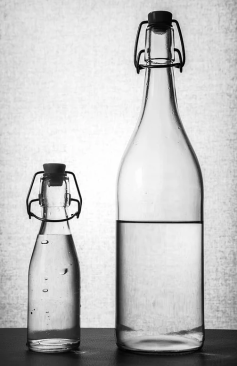Equitable Apportionment and Groundwater in Israel and the West Bank
By James Ronald Parks
Published on July 15, 2013

In arid Israel and the West Bank, water resources are a precious commodity. The hydrological sources providing water in the region are varied and reflect the relative scarcity of water in the region.
These sources include surface water sources, such as the Jordan River and ephemeral streams known as wadis, wastewater recycling programs, desalination efforts, and, critically, underground aquifers.
The underground aquifers supply much of the water for the West Bank and Gaza, whereas Israel is supplied from varied sources, including surface water (30% of potable water), desalination, natural springs (34% of potable water), and groundwater sources (36% of potable water). The management of the groundwater resources in the aquifers is the focus of Article 40 of the Oslo II Accords. There are two important aquifers in the region – the Mountain Aquifer in the West Bank and the Coastal Aquifer.
The Mountain Aquifer can be further broken down into three separate aquifers – the Western Aquifer, the most productive aquifer and one that straddles Israel and the West Bank, primarily re-charged by rainfall in the West Bank catchment area in Palestine, the smallest Northern Aquifer, which also straddles Israel and the West Bank and which is re-charged through the West Bank, and the Eastern Aquifer, wholly endogenous to the West Bank.
The Oslo II Accords, agreed to in 1995, were intended as a temporary measure along the way to a permanent peace agreement. They set the terms for joint co-operation between the Palestinian Authority (‘PA’) and Israel in the management of water resources as well as setting up the Joint Water Commission (‘JWC’) to review and approve water projects in the West Bank. Unsurprisingly, they have become outdated and ineffective, particularly in the area of water rights.
Since 1995, the Palestinians (Article 40 does not refer to the Palestinian Authority, instead it refers to the ‘Palestinians,’ although it was the PLO/PA that was the signatory to the Oslo II Accords), have actually extracted less groundwater than 1995 levels despite a growing population in the West Bank, have failed to make progress in treating wastewater and sewage – in violation of provision 3 of Article 40, and have failed to stop the drilling of some 300 unauthorized wells in the West Bank – in violation of provision 3(I). Overall, Palestinian access to clean, reliable water is discontinuous and often falls below internationally recognized baseline standards.
According to the World Bank Report, Israel has, for its part, over-drafted in excess of Article 40 allocations, has extracted to levels that the Chairman of the Israeli Water Authority describes as doing irreversible damage to the aquifer – in violation of provision 21 of Article 40, and has made an end run around the spirit of Oslo II by extracting from the Western Aquifer in areas that do not require JWC approval. These, and myriad other problems with the co-operation, protection, and development of shared water resources, too numerous to rehearse here, indicate that Article 40 of the Oslo II Accords has simply become obsolete.
Working towards a new model of co-operation between the PA and Israel which effectively works for each party will require new thinking which moves beyond Article 40 of the Oslo II Accords and embraces international water law (‘IWL’), and applies it to groundwater resources. Initially, IWL proceeded along the lines of the Harmon Doctrine, expressed by Attorney General Judson Harmon over a dispute with Mexico concerning the Rio Grande, which revolved around the principle of absolute sovereignty over water within a sovereign’s territory, with no regard to co-riparians or co-aquifer states. This doctrine was repudiated in later disputes between the United States and Canada and has broadly given way to a more nuanced, equitable doctrine which embraces limited territorial sovereignty and attempts to work out an equitable plan of distribution for water resources.
The Supreme Court of the United States, pursuant to its original and exclusive jurisdiction to adjudicate disputes between the states, has developed the sophisticated doctrine of equitable apportionment, setting the global standard and driving many of the trends in international water law.
Equitable apportionment is “the doctrine of federal common law that governs disputes between states concerning their rights to use [interstate water resources].” The US Supreme Court has stressed it is a “flexible doctrine,” which calls for consideration of a number of factors to arrive at a “just and equitable allocation” of water resources between the states.
The doctrine of equitable apportionment is sensitive to a number of considerations, including: prior use, the natural characteristics of the water source, the availability of stored water or alternate water resources, and the relative harms and benefits imposed by a particular use. The court has recognized that prior, existing uses should be given greater weight than proposed uses because of the speculative nature of proposed projects.
However, the court has wisely not allowed the doctrine of prior use to become too rigid byacknowledging that the rights of a senior user (the prior appropriator) should not take precedence where it would work a greater harm on the junior user than benefit the senior user to enforce them.
Applying the doctrine of equitable apportionment to the problem of joint water management between Israel and the PA could yield better results than Article 40 of Oslo II because it could respond to the realities on the ground and the interests of Israelis and Palestinians more closely.
The doctrine of equitable apportionment would have to consider the needs of both sides. Israel, on one hand, is a highly advanced, industrialized country which is typically the senior user when it comes to the groundwater resources in the West Bank.
The state has a sophisticated apparatus of wastewater recycling and water desalination plants, but limited naturally occurring resources and has a complex web of needs concerning agricultural, urban, and industrial uses and the settlements in the West Bank.
The equitable apportionment will, by its very nature, also have to consider the PA, representing the frequent junior user with an expanding population in the West Bank that experiences intermittent or poor quality access to water and which extracts a comparatively small amount from the aquifers, but from whose territory the Mountain Aquifer is primarily recharged. The PA has limited access to sophisticated wastewater recycling programs or desalination technologies (or seawater), and its proposed uses are often speculative and riddled with security, bureaucratic, and technical problems or poorly prepared.
Practically speaking, applying this doctrine would mean that wastewater and sewage treatment plants slated for approval or in the design stage which would benefit both sides are actually constructed and operated, Palestinian communities which are unconnected to water networks are linked up, Israeli settlements are serviced sensibly by Palestinian water systems which abut them, Palestinians are not forced to pay as much as one-sixth of their income for potable water, and unauthorized wells and rampant theft are not tolerated nor necessary to provide potable water.
As it stands, Israelis and Palestinians both suffer from the failure of the status quo as groundwater resources become contaminated, aquifers are damaged through over-extraction, theft is pervasive – including the drilling of unauthorized wells, and households continue to be unconnected to water systems and experience discontinuous or low supply – leading to high prices and unsanitary conditions.
We cannot allow the basic humanitarian and environmental concerns of providing safe, reliable water to Israelis and Palestinians and the prevention of the destruction of natural resources to become a chip in a political struggle.
The doctrine of equitable apportionment is a sensible extension of the IWL to groundwater shared between Israelis and Palestinians which could help to realize the substantive goals of Article 40 of the Oslo II Accords – goals we should all get behind.
The Author

James Ronald Parks is a 2L at Columbia Law School and Legal Intern at The Lawfare Project
Article picture: mrganso via Pixabay


